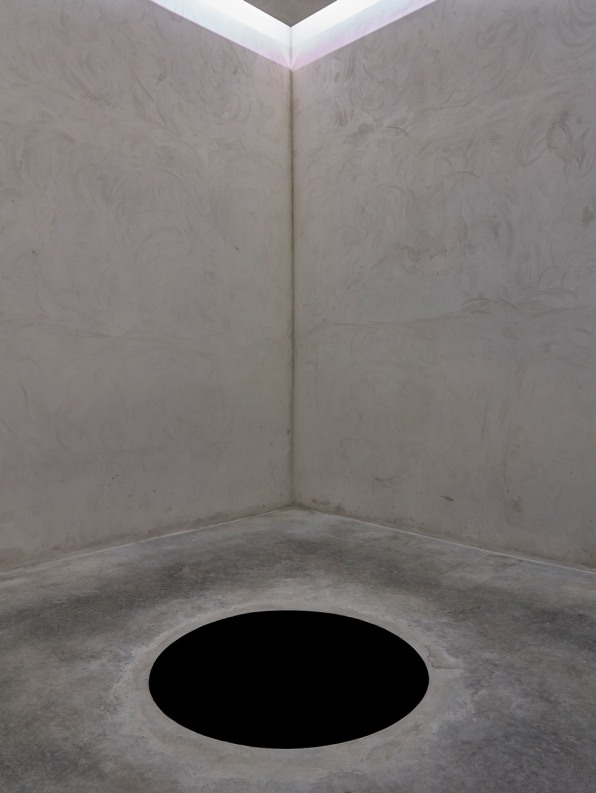On August 13, an Italian man was perusing the British artist Anish Kapoor’s art in a Portuguese art museum when he accidentally fell into a black hole. While it didn’t fling him to the nether reaches of space–it was actually just a pit painted black, also known as Kapoor’s 1992 work Descent Into Limbo–it did land him in the local hospital.

On view as part of museum Fundação de Serralves‘s survey exhibition on Kapoor’s work, the eight-foot-deep hole is located inside a free-standing 20-foot concrete cube, which helps create the optical illusion that it’s either an infinite void or just a black circle painted on the ground, depending on your perspective. In reality, the work is actually just a pit covered in black paint.
It’s not clear exactly how the man fell in, given that the museum posted signs and had a security guard present. After the accident, the exhibition was closed temporarily, perhaps to reassess the ineffectual signage or consider how to maintain the integrity of Kapoor’s work while placing caution tape around its exterior. The art piece’s poor victim is reportedly recovering well from his run-in with contemporary art.
This is the latest in a long line of bizarre incidents between art and visitors. In 2015, a boy tripped and accidentally punched a painting worth $1.5 million at a museum in Taiwan, and in Norway two more teens traced over a 5,000-year-old cave etching with the noble if misguided goal of helping people see it more clearly. In 2016, a woman filled in an empty crossword that was part of an $89,000 artwork. In 2017, a woman taking a selfie lost her balance and knocked over an entire installation, causing $200,000 in damages. And perhaps the most comical: in 2014, an exchange student in Germany got stuck inside a stone sculpture of a vagina after a dare. Firefighters had to rescue him.

Kapoor’s black holes have landed him at the heart of art world controversy before, particularly surrounding his exclusive rights to make art with Vantablack, a material developed by Surrey Nanosystems that absorbs 99.9% of light and is considered the blackest substance currently known. Descent Into Limbo is more than two decades old and far predates Kapoor’s use of Vantablack, which, coincidentally, is frequently likened to a black hole. Just imagine how many more wayward visitors would end up at the bottom if the pit was made with Vantablack, instead.
(179)